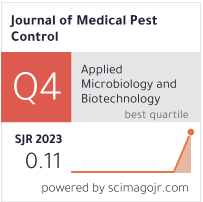Influence of COVID-19 prevention and control measures on the epidemiological characteristics of notifiable infectious diseases in Nanjing City
Abstract
Objective:
To evaluate the impact of COVID-19 prevention and control measures on the incidence and epidemiological characteristics of notifiable infectious diseases in Nanjing City, and to provide evidence for optimizing public health strategies.
Methods:
Surveillance data on notifiable infectious diseases in Nanjing from before and during the implementation of COVID-19 prevention and control measures were collected. Changes in incidence, seasonal distribution, and disease spectrum were analyzed and compared using descriptive epidemiology and statistical tests.
Results:
The overall incidence of notifiable infectious diseases significantly declined during the period of strict COVID-19 measures compared to previous years (p < 0.05). Respiratory and intestinal infectious diseases, such as influenza, measles, and hand-foot-mouth disease, showed the greatest reductions, while the incidence of certain vector-borne and chronic infections remained relatively stable. Seasonal peaks of several diseases were delayed or flattened, reflecting the effects of interventions such as mask-wearing, social distancing, and enhanced hygiene.
Conclusion:
COVID-19 prevention and control measures substantially reduced the transmission of many notifiable infectious diseases in Nanjing, particularly those spread via respiratory and contact routes. These findings highlight the collateral benefits of non-pharmaceutical interventions and provide insights for future infectious disease prevention strategies.
Full text:
PDFReferences
Zhao Y., Su J., Zhou Q., Ding S., Ma T.



